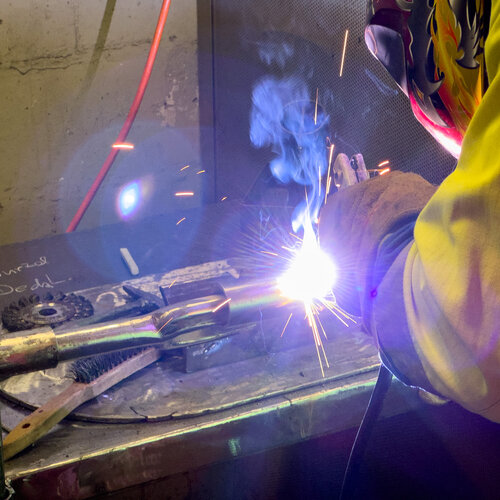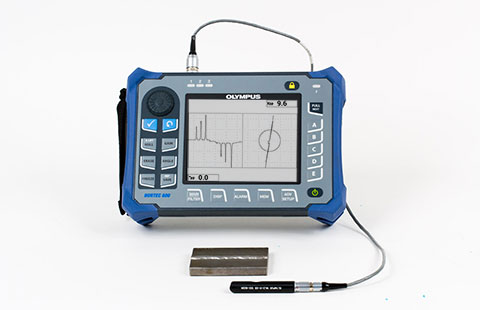Ingenious Methods to Fillet Weld Evaluation and Screening: Enhancing Weld Top Quality and Compliance Standards
In the world of welding, the quality and integrity of fillet welds play a crucial function in making sure the architectural soundness and dependability of various commercial parts. With the constant drive for improved effectiveness and compliance with strict standards, the expedition of innovative techniques to fillet weld evaluation and screening has become imperative. As sectors advance, the conventional techniques may no longer suffice in fulfilling the demands of modern welding applications. By welcoming innovative innovations and methods, a new perspective of opportunities arises in the world of weld top quality evaluation and adherence to conformity requirements.
Advanced Non-Destructive Testing Approaches
Utilizing cutting edge modern technologies, advanced non-destructive screening approaches play a vital role in making certain the honesty and quality of fillet welds. These approaches, such as phased range ultrasonic testing (PAUT) and magnetic fragment testing (MPT), deal comprehensive understandings into the weld's interior framework without causing any damage to the product. PAUT, as an example, utilizes multiple ultrasonic aspects to inspect the weld from numerous angles, giving a detailed visualization of prospective issues like lack of combination or splits.
By using these innovative non-destructive testing techniques, weld examiners can precisely evaluate the quality of fillet welds, ensuring conformity with industry requirements and policies. The capacity to find defects early on not just enhances weld top quality yet likewise avoids costly rework or failures in architectural honesty, underscoring the relevance of these cutting-edge testing strategies in welding inspections.
Robotics and Automation in Evaluation
The integration of robotics and automation has actually reinvented the evaluation procedure for fillet welds, improving effectiveness and precision in high quality evaluation. Robotics use exact control and repeatability in evaluating welds, making certain trusted and constant outcomes. Automated systems can be set to adhere to specific assessment paths, making certain extensive coverage of welds and decreasing the danger of human error.
Robotic inspection systems equipped with innovative sensing units can identify and determine weld features with high accuracy, providing detailed data for evaluation. These systems can recognize issues such as fractures, lack of blend, and porosity, making it possible for prompt restorative activities to be taken. Furthermore, robotics and automation permit real-time information collection and evaluation, supplying instant comments to operators and assisting in fast decision-making processes.
In addition, the usage of robotics and automation in fillet weld assessment boosts total performance by lowering examination times and enhancing inspection throughput. By streamlining the evaluation process, suppliers can make certain weld high quality and compliance criteria are fulfilled successfully, ultimately leading to cost financial savings and improved item top quality.
Using Artificial Knowledge for Analysis
Artificial intelligence plays a crucial role in boosting the efficiency and precision of evaluation in fillet weld examination procedures. AI algorithms can swiftly refine vast amounts of information from weld inspections, detecting flaws or inconsistencies that may be testing to determine with the naked eye - Welding Inspection Racine.
Moreover, AI systems can find out from past examination information, continually improving their capacity to identify potential flaws and variances in fillet welds. This flexible understanding capacity improves the total quality assurance process, lowering the possibility of human mistake and guaranteeing that welds meet the required standards. By integrating expert system right into fillet weld evaluation, sectors can achieve higher look at this now levels of efficiency, consistency, and conformity in their evaluation methods.
Portable Tools for On-Site Examination
 Enhancing field examination performance, the fostering of portable devices reinvents on-site evaluation processes for fillet welds. These devices supply versatility and comfort, allowing examiners to carry out comprehensive assessments in numerous locations, consisting of challenging or remote environments. Portable tools such as ultrasonic testing gadgets, magnetic particle assessment equipment, and digital radiography systems offer real-time information and high-resolution imaging capacities, making it possible for quick decision-making and immediate responses on weld high quality.
Enhancing field examination performance, the fostering of portable devices reinvents on-site evaluation processes for fillet welds. These devices supply versatility and comfort, allowing examiners to carry out comprehensive assessments in numerous locations, consisting of challenging or remote environments. Portable tools such as ultrasonic testing gadgets, magnetic particle assessment equipment, and digital radiography systems offer real-time information and high-resolution imaging capacities, making it possible for quick decision-making and immediate responses on weld high quality.One substantial benefit of portable tools is their capability to enhance assessment procedures, lowering downtime and enhancing total performance. Inspectors can easily carry these tools to various job sites, getting rid of the requirement for transporting hefty machinery or elements to off-site centers. Furthermore, the mobility of these tools promotes cost-effectiveness by minimizing transportation costs and increasing assessment timelines.
Moreover, making use of portable tools for on-site evaluation promotes positive quality assurance measures, as assessors can promptly recognize and attend to any kind of possible welding defects or discrepancies. By including these innovative technologies right into on-site assessment techniques, welding professionals can guarantee compliance with industry standards and enhance weld top quality, inevitably bring about enhanced structural stability and security in different welding applications.
Integration of Data Monitoring Solution
Having actually optimized on-site examination processes via the usage of portable devices, the next stage involves the seamless combination of information administration systems to further enhance performance and information evaluation abilities in fillet weld assessment and screening. Welding Inspection Racine. By integrating information management systems into the inspection process, organizations can simplify data you could try this out collection, storage space, and evaluation. This integration allows for real-time monitoring of weld top quality, prompt identification of issues, and timely decision-making to correct any issues that might arise throughout the assessment procedure
Data management systems play a vital role in streamlining evaluation information, assisting in very easy gain access to for licensed workers, and guaranteeing data integrity and security. With the combination of these systems, inspectors can create comprehensive records, track historical information for fad analysis, and improve overall process effectiveness. The assimilation of information administration systems allows seamless communication between various stakeholders involved in the evaluation procedure, cultivating collaboration and enhancing general top quality control procedures. Inevitably, the assimilation of data monitoring systems offers to raise the requirements of fillet weld examination and screening, ensuring conformity with sector guidelines and improving weld high quality.
Final Thought
Finally, innovative approaches to fillet weld examination and screening have actually significantly enhanced weld quality and conformity standards. Advanced non-destructive testing techniques, robotics, automation, expert system, portable devices, and information management systems have reinvented the means weld evaluations are carried out. By making use of these modern technologies, industries can ensure that welds satisfy the needed top quality criteria and regulations, eventually enhancing general performance and safety and security in welding processes.

By utilizing these advanced non-destructive testing techniques, weld examiners can precisely examine the high quality of fillet welds, making sure conformity with sector criteria and laws. Mobile devices such as ultrasonic testing gadgets, magnetic bit assessment tools, and electronic radiography systems give real-time information and high-resolution imaging capacities, making it possible for fast decision-making and prompt comments on weld high quality.
Having optimized on-site inspection procedures via the use of portable tools, the following stage includes the seamless integration of information monitoring systems to additionally improve efficiency and information evaluation abilities in fillet weld evaluation and testing (Welding Inspection Racine). Ultimately, the integration of information administration systems serves to elevate the criteria of fillet weld assessment and screening, guaranteeing compliance with sector guidelines and improving weld quality
 In conclusion, cutting-edge techniques to fillet weld evaluation and dig this testing have actually substantially enhanced weld quality and conformity standards.
In conclusion, cutting-edge techniques to fillet weld evaluation and dig this testing have actually substantially enhanced weld quality and conformity standards.
Comments on “What to Expect from a Comprehensive Welding Inspection Racine”